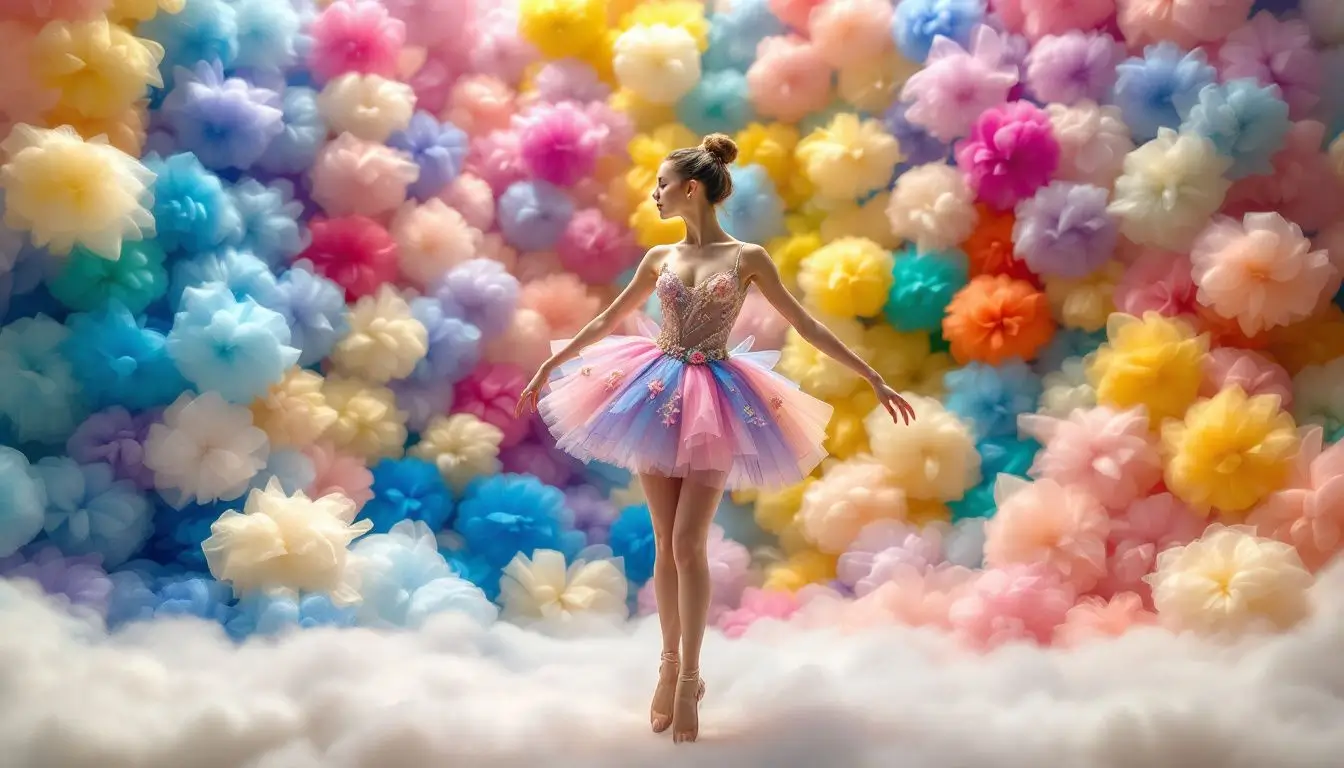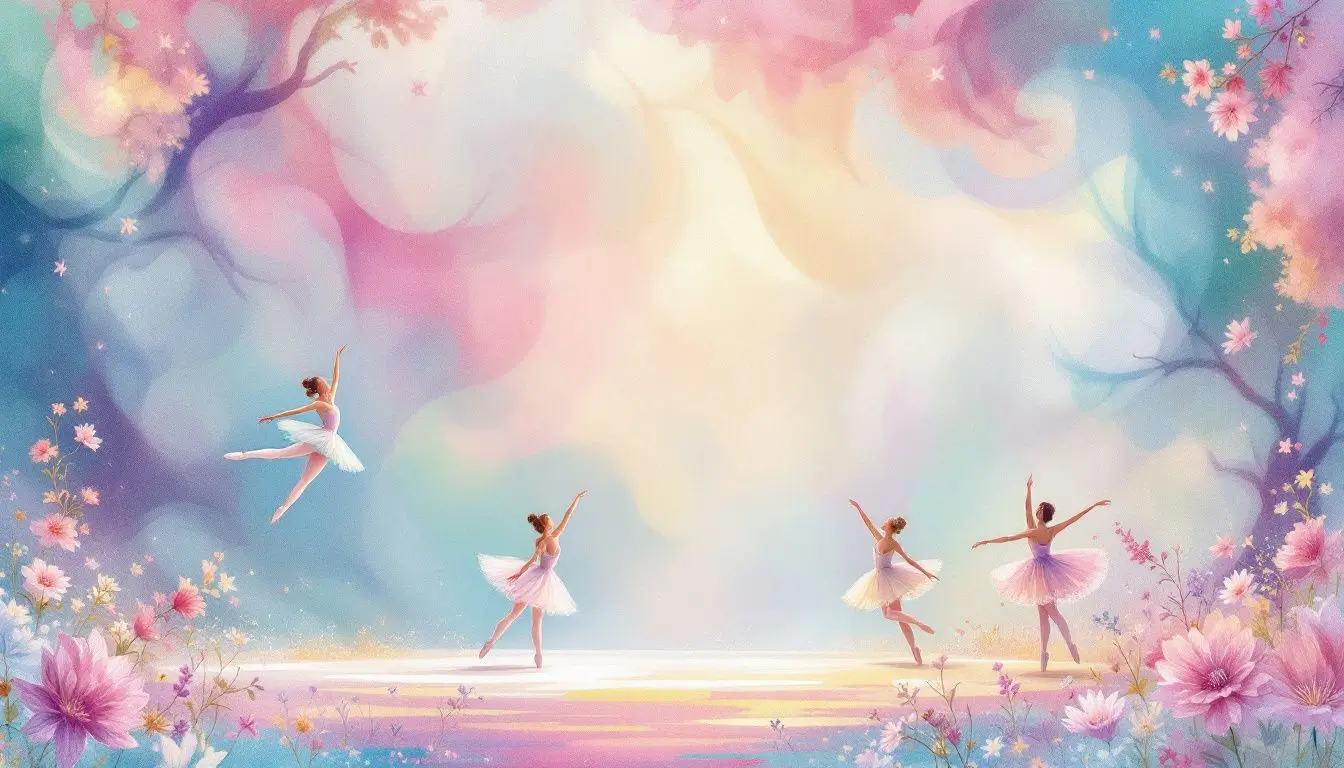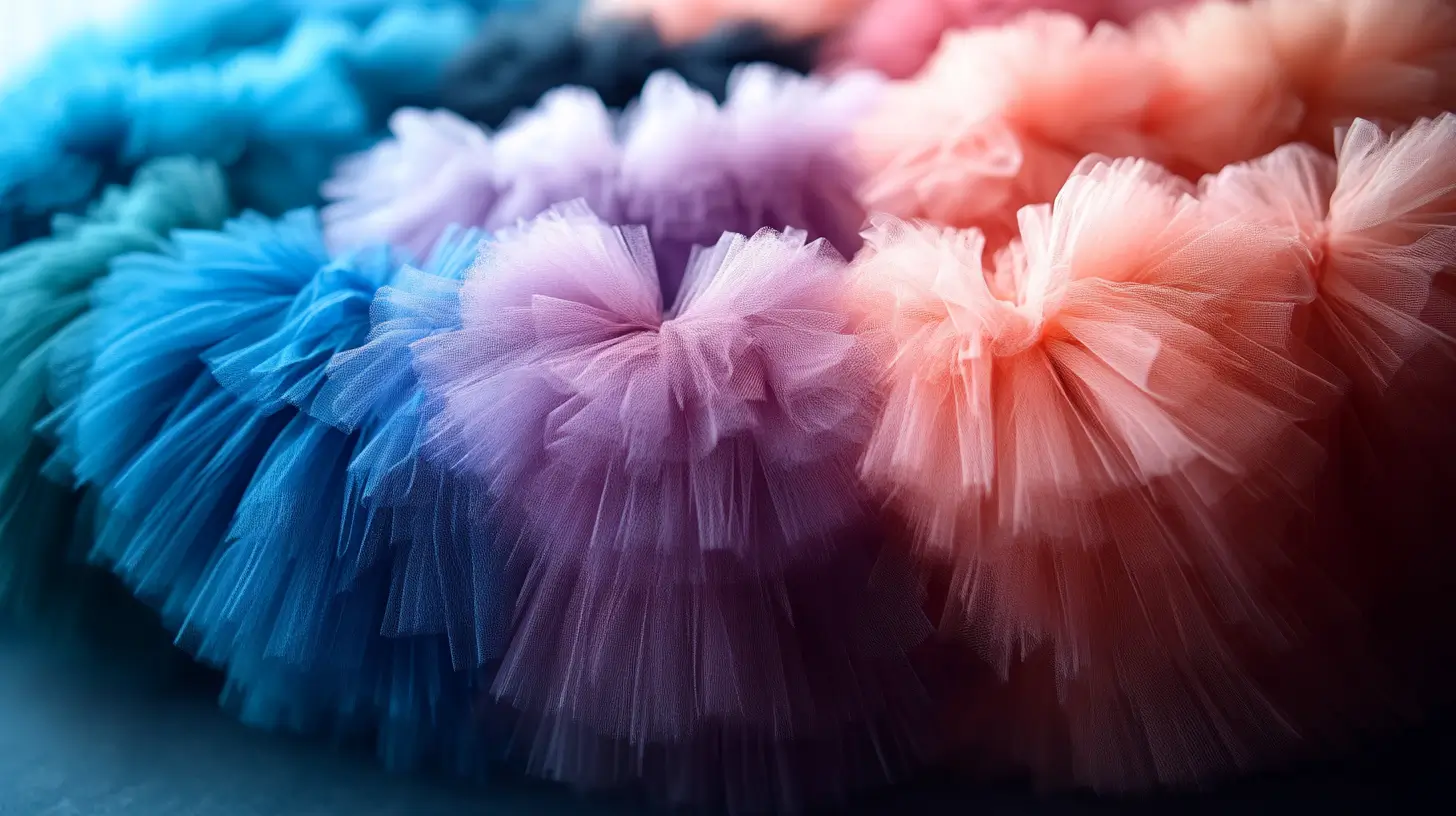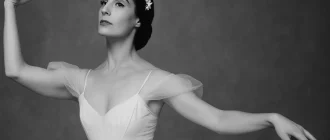Searching for a tutu types overview? You’re in the right place. This article covers the main types, such as Romantic and Classical tutus, detailing their features, materials, and historical background. Dive in to understand how each bell style of tutu enhances a ballet performance by improving the fluidity and grace of ballet dancers’ movements.
Graceful Insights
- Tutus are categorized into two main types: Romantic and Classical, each reflecting different historical and design characteristics in ballet.
- The construction and materials of various tutu types, such as pancake, platter, and romantic tutus, influence their appearance, functionality, and performance suitability.
- Caring for a tutu involves proper storage techniques and gentle cleaning methods to maintain its shape and prolong its lifespan, ensuring optimal performance quality.
Are de Podcast
| Tutu Type | Description | Typical Use | Example Ballets |
|---|---|---|---|
| Romantic Tutu | A soft, bell-shaped skirt made of multiple layers of tulle, typically extending between the knee and ankle. This design emphasizes an ethereal, weightless appearance. | Romantic-era ballets portraying supernatural or delicate characters. | La Sylphide, Giselle |
| Classical Tutu | A short, stiff skirt that projects horizontally from the hips is made of several layers of tulle and is often supported by a wire hoop to maintain its shape. | Showcases the dancer’s precise footwork and leg movements in classical ballets. | Swan Lake, The Sleeping Beauty |
| Pancake Tutu | A subtype of the classical tutu with a flat, pleated skirt that extends straight out from the hips, supported by a hoop and multiple layers of tulle for rigidity. | Used in grand pas de deux and variations requiring a dramatic, structured appearance. | Don Quixote, La Bayadère |
| Platter Tutu | Similar to the pancake tutu but with a flat, decorated top layer that sits at the waist, resembling a platter. | Suitable for grand classical roles where an ornate costume is desired. | The Sleeping Beauty, Cinderella |
| Bell Tutu | A short, bell-shaped skirt without a hoop, made of loosely tacked layers of netting that provide a softer, fuller appearance. | It is often used in ballets that require a classical yet less rigid look. | Paquita, Divertimento No. 15 |
| Powder Puff Tutu | Also known as the Balanchine or American tutu, this style features short layers of soft tulle without a hoop, allowing for greater freedom of movement and a more natural silhouette. | Common in neoclassical and contemporary ballets, particularly those choreographed by Balanchine. | Symphony in C, Western Symphony |
Understanding Tutu Basics

Tutus, the quintessential ballet costume, is broadly categorized into two main types: Romantic and classical. Each type has a unique history and design characteristics that reflect the evolution of ballet itself. The evolution of tutus is a fascinating tale that mirrors societal changes, particularly in fashion and the role of women. These iconic garments have evolved alongside ballet, adapting to new techniques and performance demands.
A tutu’s design balances functionality and aesthetics. Materials, skirt structure, and bodice fit all enhance the dancer’s freedom and expressiveness. Knowing these basics helps you appreciate the nuances of each tutu style. Various styles of tutus, such as classical and platter tutus, are designed to accentuate and showcase the dancer’s legs, emphasizing the lines and movements and making the dancer’s technique and footwork more visible to the audience.
What is a Ballet Tutu?
A ballet tutu is a quintessential costume worn by ballet dancers during performances. It is designed to accentuate the fluidity and grace of their movements. Typically, a ballet tutu consists of a skirt made from layers of tulle, often with an attached bodice or top section. The primary purpose of a ballet tutu is to enhance the visual allure of the performance, adding an element of beauty and elegance.
These meticulously crafted costumes feature intricate details and ornate decorations that match the ballet’s dance style, characters, and storyline. The attached bodice supports and ensures a snug fit, allowing the dancer to move freely and expressively on stage.
Materials Used in Tutus
Fabrics for tutus are selected for their lightweight and flexible properties, which are essential for fluid movement. Common materials include:
- Tulle
- Netting
- Muslin
- Lycra/Spandex
These materials ensure that the tutu is durable and comfortable, allowing the dancer to perform complex movements easily.
Various tutu types require specific materials to achieve their unique appearances. For instance, pancake tutus are constructed with multiple layers of stiff tulle, usually eight to ten layers, to create a flat and rigid appearance. On the other hand, romantic tutus are made with softer, lighter fabrics like cotton muslin and tulle, typically in three to five layers, to create a flowing and ethereal effect.
The Structure of a Tutu
A tutu’s bodice fits snugly, often resembling a corset with shoulder straps. It provides support and aesthetic appeal. The side pieces of the bodice are two short layers usually cut on the bias to take advantage of the fabric’s stretch, ensuring a perfect fit.
Beneath the tulle support of the attached bodice, the basque extends from the waist to the crotch. The basque is the foundation for the skirt’s layers, providing a base to which the tulle skirt and layers are attached. This design maintains the tutu’s shape and structure, enabling graceful movement with the dancer.
The skirt of a tutu is perhaps its most defining feature. It is usually made from about ten layers of stiff tulle attached 15 mm apart for perfect alignment. The skirt is often crafted with pleated tulle and some net. The lengths of these tulle layers decrease from top to bottom, enhancing the tutu’s shape and volume. This structured design enhances the dancer’s movements and creates a visually striking effect on stage.
Classical Tutus

Classical tutus, which emerged in the 1880s, are characterized by their shorter length and stiff structure. They extend twelve to eighteen inches from mid-thigh to hip. Designed to showcase the ballerina’s legs, these tutus are cut above the knee and often feature elaborate embellishments to suit different roles and performances.
The use of different materials in performance tutus adds to their visual appeal, making them a staple in classical ballet and classical tutu.
Pancake Tutu
The pancake tutu is known for its flat, stiff structure, achieved by incorporating multiple layers of tulle and a steel hoop woven through the fabric. This design maintains the tutu’s shape and allows it to bounce slightly with the dancer’s movements, enhancing its visual appeal.
Pancake tutus include a pair of briefs for a secure fit, making them ideal for roles requiring fast, intricate footwork.
Platter Tutu
Like the pancake tutu, the platter tutu features a flat top layer but sits closer to the waist and often includes a decorative overskirt. This horizontal, plate-like appearance allows for intricate designs and embellishments on the top layer, making it a favorite in classical ballet performances. Platter tutus enhance the visual appeal of the dance.
Unlike the pancake tutu, the platter tutu’s design sits more naturally with the dancer’s waist, offering a different aesthetic appeal.
Bell Tutu
The bell and inverted bell tutu stand out with their voluminous, flared shapes created by multiple fabric layers. This design enhances the dancer’s movements, creating a dynamic and visually appealing silhouette. Often seen in iconic ballet works such as ‘The Nutcracker’ and ‘Giselle,’ the full bell-shaped tutu’s construction involves several layers of lightweight tulle, giving it both volume and elegance.
Its shape and layering make it a versatile choice for a royal ballet name for various classical ballet roles.
Romantic Tutus

Romantic tutus, characterized by their longer, flowing design, are a hallmark of romantic ballet. These tutus enhance the visual elegance and sleeping beauty of a dancer’s movements, creating an ethereal and graceful appearance for female dancers on stage.
Its design allows for a soft, full look, complementing the expressive nature of romantic ballet performances.
Features of Romantic Tutus
Typically, romantic tutus are mid-calf in length, though they can range from the knee to the ankle. Constructed with five or six layers of lightweight fabric, these tutus allow easy movement while maintaining a soft, full appearance. The use of materials like cotton muslin and tulle adds to their ethereal quality, making them a favorite in romantic ballet performances.
The longer length and multiple layers create a flowing silhouette for female dancers, enhancing the dancer’s leg’s grace and elegance.
Historical Context
The romantic tutu debuted in 1832, marking a pivotal period in ballet history. This style is famously represented in the artwork of Edgar Degas, highlighting its significance in ballet aesthetics. The romantic tutu underscores ballet’s elegant and expressive movement, making the dress worn an enduring symbol of the romantic era.
Its introduction added a new level of grace and fluidity to ballet, influencing costume design for generations.
The Evolution of Tutus in Ballet
The evolution of tutus in ballet is a fascinating journey that reflects changes in fashion, dance styles, and cultural trends. From the early Romantic period tutus of the 19th century to the modern classical tutus of today, the design and construction of tutus have undergone significant transformations.
Introducing new materials, such as stiff tulle and netting, has created more durable and versatile tutus. These innovations have allowed for different tutu styles, such as the pancake, platter, and bell tutus, each offering unique aesthetic and functional qualities. This evolution has allowed choreographers and dancers to experiment with new movements and expressions, continually pushing the boundaries of ballet performance.
Modern and Contemporary Tutus

Modern tutus have evolved to include a variety of styles that cater to many different styles of ballet techniques and performances. They are characterized by lightweight materials and innovative designs that enhance the dancer’s movement and comfort.
These ballet and bell tutus reflect contemporary ballet’s dynamic and expressive nature. They offer a fresh take on traditional designs while maintaining the elegance and grace of classical and ballet tutu.
Powder Puff Tutu
The powder puff tutu is known for its soft, full appearance and is often shorter than others. Unlike the stiff layers of a full pancake-style tutu, the powder puff tutu’s layers are mostly the same length, allowing for more fluid movement with the dancer.
This design is popular for roles requiring expressive and dynamic movements, enhancing the performance’s visual appeal.
Balanchine Tutu
The Balanchine tutu, named after the famous choreographer George Balanchine, is designed to be shorter and more flexible. It caters to the dynamic movements of neoclassical ballet and offers greater freedom of movement, ideal for the intricate and expressive choreography typical of Balanchine’s works.
Its flexible design and shorter length enhance the dancer’s ability to perform complex footwork and movements, making it a staple in contemporary ballet.
Specialized Tutus for Practice and Performance
Dancers also use specialized tutus for practice. These tutus are designed to be functional and durable, allowing dancers to rehearse their movements without the weight and restrictions of a full costume.
These tutu tutus prioritize comfort and ease of movement, making them essential in a dancer’s wardrobe.
Rehearsal Tutu
Rehearsal tutus emphasize functionality, allowing dancers to practice movements without the weight of a full costume. These tutus are often made from lightweight materials, ensuring ease of movement during practice. A tutu bag is recommended for transport to avoid crushing the fabric and preserve the practice tutu’s shape and structure.
Rehearsal tutus are designed for durability and comfort, suitable for frequent use.
Performance Variations
Performance tutus are designed to meet the specific demands of various ballet performances. They showcase the dancer’s movements and artistic expression, often featuring intricate designs and embellishments.
The average cost of a professional tutu is around $2,000, reflecting the investment required for quality materials and craftsmanship. The choice of materials and decorative elements plays a crucial role in the tutu’s performance effectiveness, overall aesthetic, and impact on the stage.
Crafting a Tutu
Creating a tutu involves a precise method of cutting tulle strips and knotting them loosely sewn onto a waistband, often using stiff tulle sewn into the design. This process requires significant attention to detail, including fabric selection and construction techniques.
The craftsmanship of a tutu is a testament to the creator’s dedication and skill. The result is a beautiful and functional garment.
Time and Skill Required
Crafting a tutu is a labor-intensive process that can take anywhere from half a day to several hours, depending on the complexity of the design. A basic tutu might take about 20 hours to complete, while more intricate designs with embellishments can require up to 60 hours.
This process involves various skills, from simple knotting techniques to advanced sewing methods, showcasing significant dedication and craftsmanship.
Customization and Fitting
Customization ensures that a tutu looks good and allows the dancer maximum mobility and comfort. This involves meticulous measurements to create a perfect fit tailored to the dancer’s body. Adjustments may vary depending on the specific role performed. For instance, rehearsal tutus may be designed differently from performance tutus to enhance practice without losing essential elements.
Crafting a custom-fitted tutu can take between 20-60 hours, depending on the complexity and skill of the creator.
Caring for Your Tutu

Maintaining the beauty of a tutu requires careful cleaning and storage to prolong its lifespan. Proper care ensures that the tutu retains its shape and structure, allowing it to continue to enhance the dancer’s performance.
Caring for a tutu involves proper storage methods and gentle cleaning practices.
Proper Storage Techniques
Hanging a tutu upside down helps maintain its shape. This prevents the fabric from drooping and helps retain its structure. Suitable hanging apparatus, such as padded hangers or clips, can help avoid stressing the delicate fabric.
Alternatively, stacking tutus with each layer properly supported can also be effective. These proper storage techniques are essential for preserving the integrity of the tutu over time.
Cleaning and Maintenance
Hand washing in cold water is generally the least damaging method for cleaning tutu fabrics. Lukewarm water and mild detergent are also advisable. Spot cleaning is recommended for stains.
A steamer can gently remove wrinkles without risking damage. However, it’s crucial to allow tutus to air dry completely before storage to prevent mildew and ensure they remain pristine for future performances.
Resume
In summary, tutus are more than just costumes; they are an integral part of ballet that enhances the dancer’s performance and adds to the visual spectacle of the art form. Each style has unique characteristics and historical significance, from the classical tutus like the pancake, platter, and bell tutus to the romantic and modern variations.
Crafting and the tutu tutus caring for these garments require skill and dedication, highlighting the artistry involved in ballet. Whether you are a dancer, costume designer, or ballet enthusiast, understanding the intricacies of tutus deepens your appreciation for this timeless element of the dance world of ballet. Embrace the elegance and craftsmanship of tutus, and let them inspire your journey in ballet.







